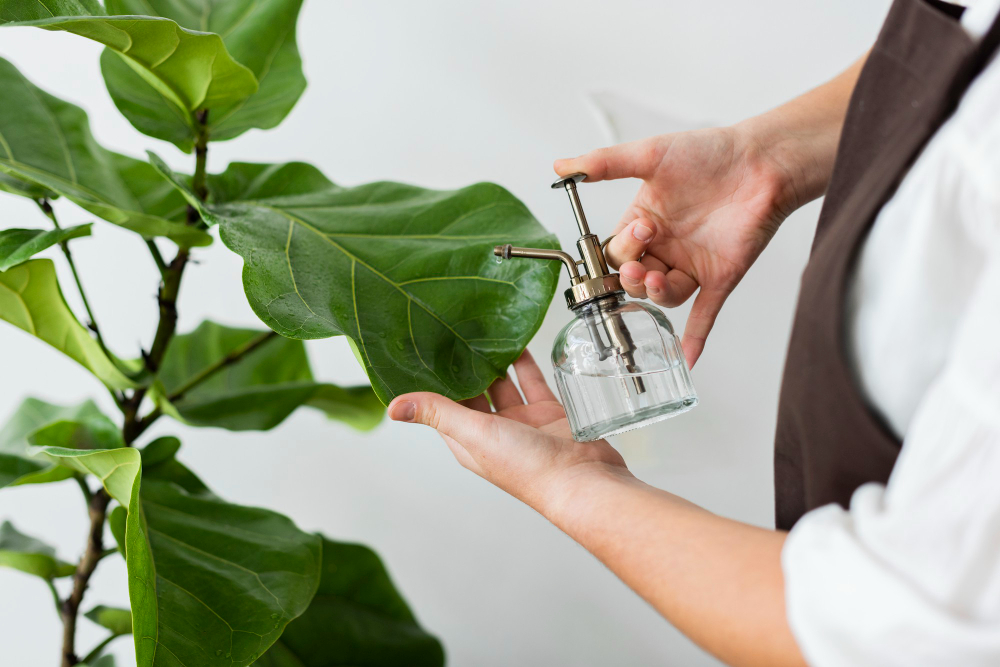Scientifically known as Tillandsia, air plants are captivating and low-maintenance plants that have captured the hearts of enthusiasts worldwide. These unique plants don’t require soil, making them an intriguing addition to any space. Mastering the art of care is essential to ensure your air plant thrives and flourishes. In this comprehensive guide, we delve into the world of air plants, unveiling their needs, growth patterns, and the secrets to becoming a successful air plant parent.
What Makes Air Plants Special
Air plants are epiphytes, naturally growing on other surfaces like trees and rocks. They use their specialized trichomes—tiny hair-like structures—to absorb moisture and nutrients from the air. This unique adaptation allows them to survive without soil, making them versatile and easy to care for.
Finding the Perfect Balance
Light is crucial for air plants, but finding the right balance is key. Indirect, bright light is ideal—think of a sunny windowsill with filtered light. Avoid placing them in direct sunlight, as intense rays can scorch their delicate leaves. An east or west-facing window is often a great choice.
Misting and Soaking Techniques
Watering air plants is an art, and striking the right balance is essential to prevent overwatering or underwatering. The “soak and dry” method is commonly used: submerge your air plants in water for about 20-30 minutes every one to two weeks. After soaking, allow them to dry upside down to prevent water from pooling in the center, which can lead to rot.
Misting is another method, especially in drier environments. Mist your air plants 1-2 times a week, ensuring they dry within 4 hours. Remember, they absorb moisture from the air, so maintaining humidity is essential.
Keeping Things Breezy
Air plants thrive in well-ventilated spaces. Adequate air circulation prevents moisture buildup and minimizes the risk of rot. Ensure proper ventilation to promote a healthy environment if your air plant is housed in a terrarium or enclosure.
Finding Their Comfort Zone
Air plants generally prefer temperatures between 50°F to 90°F (10°C to 32°C). Protect them from extreme cold or heat, and avoid placing them near heating or cooling vents. Provide additional care during extreme conditions if your home experiences significant temperature fluctuations.
Nourishing Your Air Plant
Air plants need nutrients to thrive but don’t require as much as traditional potted plants. Use a diluted, water-soluble fertilizer specifically formulated for air plants. Fertilize once a month during the growing season (spring and summer) and reduce frequency during the dormant period (fall and winter).
Growing Your Air Plant Family
Air plants produce offsets, or “pups,” as part of their natural growth cycle. These tiny plants can be carefully separated from the parent plant once they’re about one-third the size of the original. Gently twist or snip the pup away and allow it to establish itself before treating it like a mature air plant.
Displaying Your Air Plants
Air plants’ versatile nature extends to their display options. They can be mounted on driftwood, rocks, seashells, or decorative holders. Ensure the chosen display doesn’t trap excess moisture and allows for proper air circulation.
Addressing Common Issues
While air plants are relatively low-maintenance, a few common issues can arise. Overwatering, inadequate air circulation, and insufficient light can lead to problems like root rot or leaf discoloration. Pay attention to your air plant’s appearance and adjust care accordingly.
Cultivating a Flourishing Air Plant Haven
Caring for air plants isn’t just about nurturing a green companion—it’s a journey of discovery, patience, and appreciation for nature’s resilience. By understanding their unique needs, you embark on a fulfilling path of nurturing life and beauty in your space. As you master the art of air plant care, you’ll witness the magic of these delicate wonders transforming into flourishing symbols of vitality and charm, enhancing your connection to the natural world around you.



